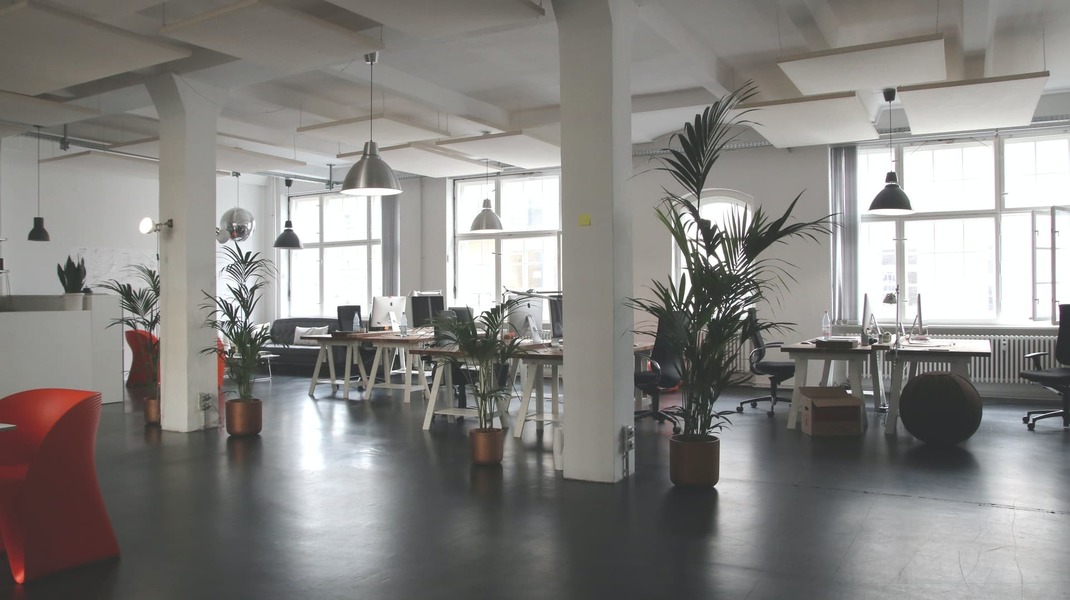Providing adequate ventilation and lighting are the basics of a healthy working environment. We don’t all live in a yellow submarine, where there would be no windows to open and extremely cramped living and working quarters. If you join the navy as a submariner, you know what you’re going in for. But when you join a land-based organisation, you do not expect to find cramped workplaces with a lack of natural air and lighting.
Unfortunately, this is the norm for too many offices. We’re not talking about getting in a Feng Shui expert to install strategically placed mirrors, plants and crystals, either. Having a healthy working environment begins with down-to-earth practicality and respect for the individual.
It is symptomatic of our society’s current mind-set, that in the recent tumult over the banning of smoking from places of entertainment, little regard was made for the well being of employees who are forced to inhale cigarette smoke during the entire period of their working day. (The recent ruling by a Norwegian court that smoking while working is a basic human right clashes head-on with the medical profession’s insistence that smoking bans in the workplace could save thousands of lives each year.) Concern for the individual’s right to a healthy working environment needs to be instilled, much as respect for the natural environment is taught to youngsters.
Last month, the European Commission announced plans to consult workers and employers groups in a move to tackle the problem of cancer caused by, for example, passive smoking in the workplace, or by inhaling wood dust or diesel exhaust fumes while at work. “An estimated 32 million workers in the EU are exposed to substances that cause cancer and have other harmful effects, and at levels that exceed what is considered as safe,” the Commission says. “Between 35,000 and 45,000 cancer deaths per year are due to exposures occurring in the workplace.”.
The daily grind
Three women share their true experiences of unhealthy office environments:
● ‘My first job was in a financial concern. There were no windows because ours was a floor that had been squeezed between existing floors. A lack of sunlight, grey paint on the walls and the overall greedy environment led me to suffer from work-related stress aged 20! I could not take more than six months.’
● ‘My appeals to management, even to a government minister, have fallen on deaf ears. The halogen lighting and heat coming from the restaurant beneath our office, is frying me. I have terrible migraines, conjunctivitis, repetitive strain injury in my shoulder, am recovering from glandular fever and ME, and have been stuffed into a green gypsum cubicle with a tiny window. I am at my wits end. I am humiliated by the way no one seems to care. It looks like my only way out is to leave.’
● ‘One window in the kitchenette was the only source of air for ten employees, which would be kept closed in winter. When my desk was next to the computer server, I would get dizzy when I stood up. Our credit cards and mobile phones would fail if our handbags were placed near the electricity supply. I had to shift my computer away from the wall because of the thick electricity cables on the outside of the building. If it was making my monitor flicker, what was it doing to my body? I also had the photocopier in the same office, which was making us dizzy. Our calls for screens for the monitors never resulted in us getting them – there was always the excuse of lack of funds. We actually fought for the ‘good chairs’ when their previous owners left. Do you think any of the managers cared? We had to bring our own heaters to work, and some of us sat at our desks in our thick winter coats. This is not to mention the exposed darkroom chemicals and smoking indoors. People coming in and out the office meant I could never have peace and quiet. Add that to the constant swearing and shouting, and it was more like purgatory than a place to have pride in. Was I going to spend the rest of my life tied to a desk and computer in such an environment? It’s no wonder I could not bear to stay indoors on the weekend. It was killing me slowly. I treat my dog better than we were treated in that place. I just never had the guts to call the Health and Safety Department for fear of losing my job.’
Daylight first
The golden rule of anyone setting up a work environment is to provide good indoor air quality and adequate ventilation. You cannot just install neon tubes and an air conditioning unit in each office and believe that you have these requirements covered. Remember, that most people will close all windows to keep in the cool or hot air – are they then getting adequate fresh ventilation?
Daylighting is the controlled admission of natural light into a space through windows to reduce or eliminate electric lighting. By providing a link to the perpetually changing patterns of light outdoors, daylighting helps create a visually stimulating and productive environment for building occupants, while reducing as much as one-third of total building energy costs. Daylighting has the potential to significantly improve life cycle cost, increase user productivity, reduce emissions, and reduce operating costs.
The daylighting design process involves the integration of many disciplines including architectural, mechanical, electrical, and lighting. The art and science of proper daylighting design is not so much how to provide enough daylight to an occupied space, but how to do so without any undesirable side effects. It involves more than just adding windows or skylights to a space. It is the careful balancing of heat gain and loss, glare control, and variations in daylight availability. For example, successful daylighting designs will invariably pay close attention to the use of shading devices to reduce glare and excess contrast in the workspace. Additionally, window size and spacing, glass selection, the reflectance of interior finishes and the location of any interior partitions must all be evaluated.
If I can see it, I can do it
An awareness of basic visual acuity and performance issues is essential to an effective daylighting design. Introduce as much controlled daylight as deep as possible into a building interior. The human eye can adjust to high levels of luminance as long as it is evenly distributed. Light which reaches a task indirectly (such as having bounced from a white wall) will provide better lighting quality than light, which arrives directly from a natural or artificial source.
Glare, or excessive brightness contrast within the field of view, can cause discomfort. The human eye can function quite well over a wide range of luminous environments, but does not function well if extreme levels of brightness are present in the same field of view. Veiling reflections of high brightness light sources off shiny surfaces should be avoided, particularly where critical visual tasks occur.
Some contrast in brightness levels may be desirable in a space for visual effectiveness. Dull uniformity in lighting can lead to tiredness and lack of attention – neither of which is compatible with a productive environment.
The air that I breathe
While many of us tend to think of ventilation as the introduction of outdoor air, ventilation is actually a combination of processes, which results in the supply and removal of air from inside a building. These processes include bringing in outdoor air, conditioning and mixing the outdoor air with some portion of indoor air, distributing this mixed air throughout the building, and exhausting some portion of the indoor air outside. The quality of indoor air may deteriorate when one or more of these processes is inadequate. For example, carbon dioxide (a gas that is produced when people breathe), may accumulate in building spaces if sufficient amounts of outdoor air are not brought into and distributed throughout the building. Carbon dioxide is a surrogate for indoor pollutants that may cause occupants to grow drowsy, get headaches, or function at lower activity levels. There are many potential sources of indoor air pollution, which may singly, or in combination, produce other adverse health effects. However, the proper design, operation and maintenance of the ventilation system is essential in providing indoor air that is free of harmful concentrations of pollutants.
Sources of indoor air pollution
Indoor air pollution is caused by an accumulation of contaminants. Sources of indoor air pollution include tobacco smoke, biological organisms, building materials and furnishings, cleaning agents, copy machines, and pesticides.
Control of pollutants at the source is the most effective means of promoting indoor air quality. An adequate supply of outdoor air is essential to diluting indoor pollutants.
In the absence of adequate ventilation, irritating or harmful contaminants can build up, causing worker discomfort, health problems and reduced performance levels.
Air cleaning is an important part of a mechanical heating, ventilation, and air-conditioning system, but is not a substitute for source control or ventilation. All air cleaners must be properly sized and maintained to be effective.
Let the sunshine in
A system that is properly designed, installed, maintained, and operated is essential to providing healthful indoor air; a poorly maintained system can generate and disperse air pollutants. Common sense dictates that at the very least, employees should have the possibility of opening a window close to every work station, and enjoy adequate lighting to the task at hand. Managers, bosses, please take note, your employees’ health is in your hands.
For more information, kindly direct your request to [email protected]

